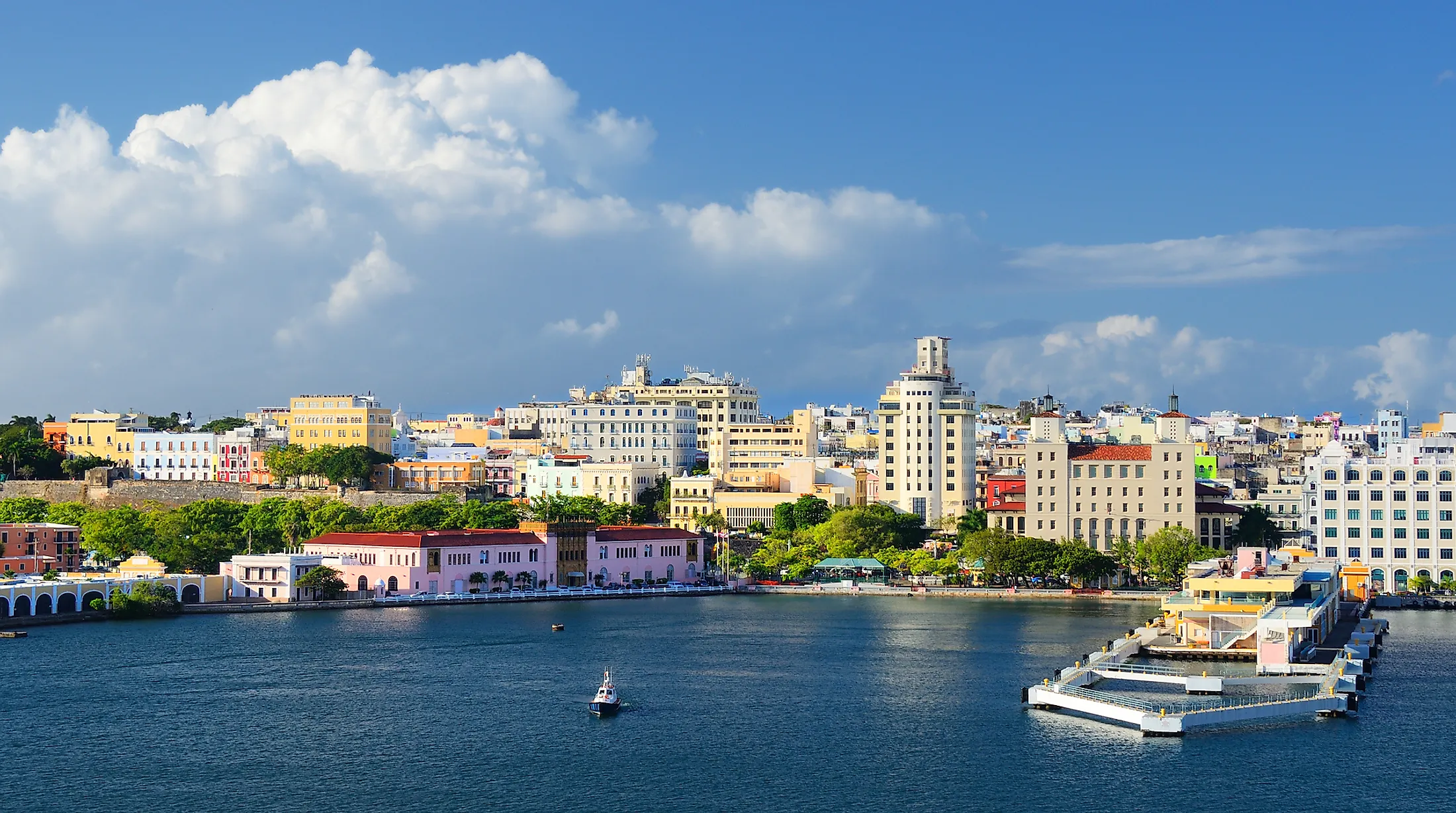
Puerto Rico
The United States administers 14 territories globally, of which 11 are in the Pacific Ocean and 3 in the Caribbean. However, only 5 of the overseas territories are permanently inhabited. Puerto Rico is one of the 3 inhabited territories in the Caribbean. It is territory in the northeast Caribbean Sea located about 1,600 km southeast of Miami. It is the largest and most populous US administrative territory.
Contents:
- Where Is Puerto Rico?
- Geography Of Puerto Rico
- The Climate Of Puerto Rico
- Brief History
- Capital Of Puerto Rico
- Government Of Puerto Rico
- The Population Of Puerto Rico
- Culture Of Puerto Rico
- Wildlife Of Puerto Rico
- The Economy Of Puerto Rico
- Traveling To Puerto Rico
Where Is Puerto Rico?
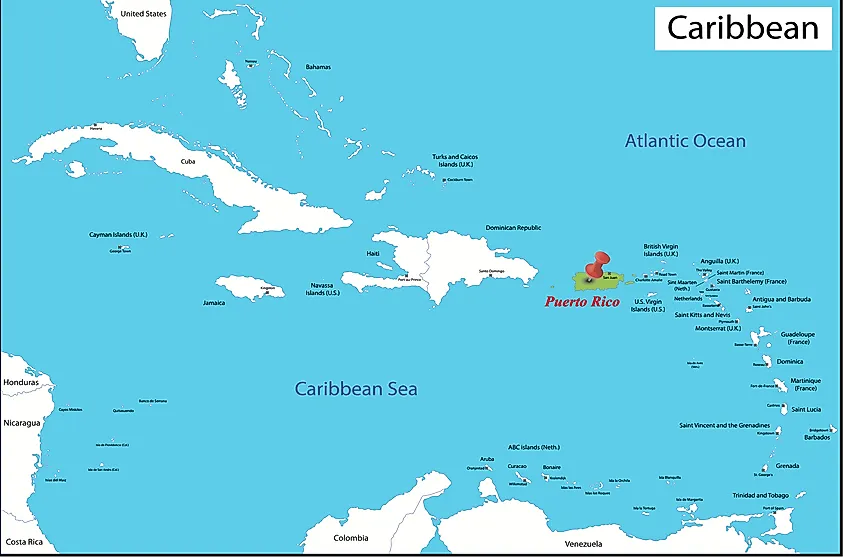
The Commonwealth of Puerto Rico is an island group consisting of the main island of Puerto Rico and numerous other smaller islands. Some notable islands of Puerto Rico are Mona, Vieques, Caja de Muertos, Culebra, and Desecheo. These islands are located in the northeastern sea between the North Atlantic Ocean and the Caribbean Sea. Puerto Rico is bound to the west by the Dominican Republic, east by the Virgin Island, another territory of the US, and south by Venezuela.
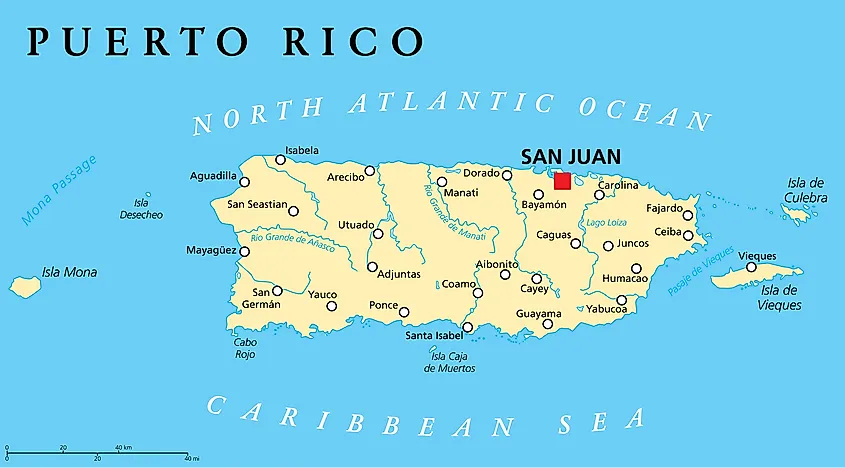
Florida is the nearest state to Puerto Rico. Miami, the state’s capital, is approximately 1,600 kilometers northwest of the overseas territory. Its limits extend from the western boundary with the Dominican Republic and Haiti. It is separated from the two countries by the Mona Passage. Puerto Rico’s eastern limit is on the boundary with the Virginia Island. The Atlantic Ocean is to the north, while the Caribbean Sea is to the South. The Puerto Rico-US border is opened, allowing for free movement of merchandise and people.
Geography Of Puerto Rico
|
Feature |
Fact |
|---|---|
|
Coordinates |
18 15 N, 66 30 W |
|
Total Area |
9,104 sq km |
|
Land Area |
8,959 sq km |
|
Water Area |
145 sq km |
|
Land Boundaries |
0 km |
|
Territorial Sea |
12 nm |
|
Exclusive Economic Zone |
200 nm |
|
Mean Elevation |
261 m |
|
Lowest Point |
0 m (Caribbean Sea) |
|
Highest Point |
1,338 m (Cerro de Punta) |
Source: CIA World Factbook
Puerto Rico is the US's third-largest Island after Hawaii and Kodiak islands. It covers 9,104 km2 making it the US's largest, permanently inhabited overseas territory. Approximately 8,959 km2 of Puerto Rico is land and the rest is water. It is larger than two states; Rhodes Island and Delaware and over 96% the size of Connecticut. The maximum length from west to east (Punta Higuero to Punta Puerca) is approximately 180 kilometers, while the maximum width from south to north (Punta Colon to Isabella) is 65 kilometers.
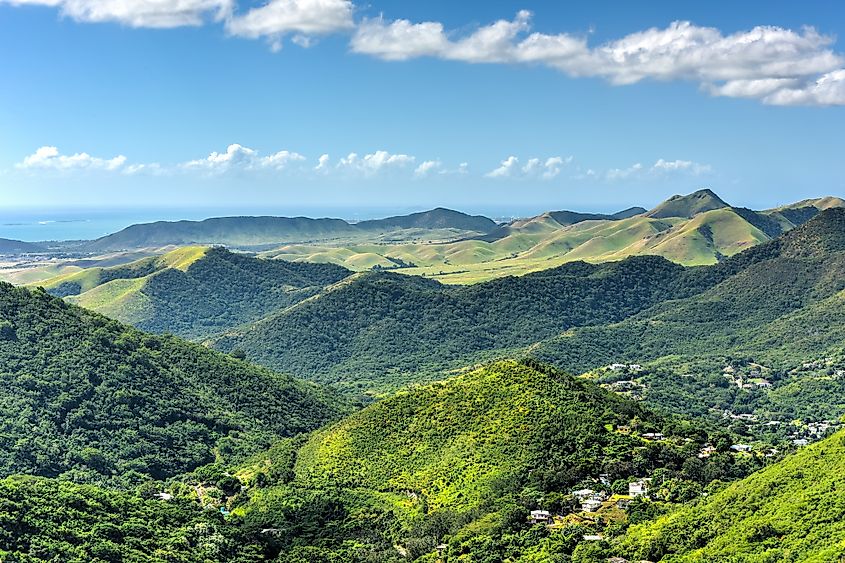
Puerto Rico is mainly mountainous, with The Central Range as the main range. The highest peak is Cerro de Punta at 1,338 m above sea level. The peak is also the island’s highest point. Besides the mountain range, Puerto Rico has large coastal areas, more than 50 rivers, and 17 lakes, all artificial lakes. Most of the rivers originate from the Central Range.
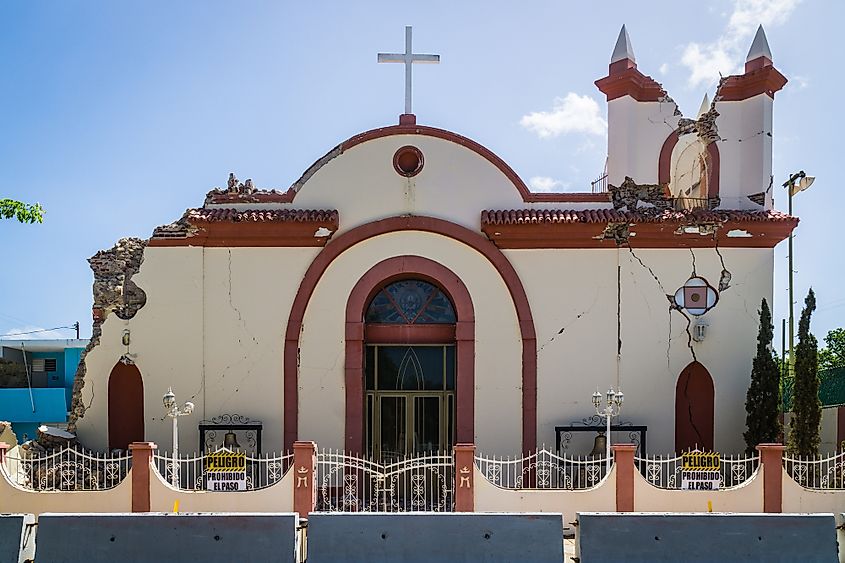
Because Puerto Rico lies on the boundary between the North American and Caribbean plates, the archipelago is prone to earthquakes and tsunamis. The tectonic stressors that are deforming the plates cause them to interact, leading to seismic events. On October 11, 1918, Puerto Rico experienced one of the worst earthquakes in its history. The 1918 San Fermin earthquake, with a magnitude of 7.1, struck the island at 1014hr local time, along the Puerto Rico Trench. The tsunami triggered by the earthquake swept the island’s west coast, causing extensive destruction, including about 118 deaths and destruction of property worth $4-$29 million. The island’s second major earthquake occurred on January 7, 2020, with an estimated magnitude of 6.4. It caused a loss huge loss of property.
The Climate Of Puerto Rico
Puerto Rico’s climate is classified as tropical rainforest, with an average temperature of 85 degrees Fahrenheit in lower regions and 70 degrees Fahrenheit in the mountains. The southern regions are always warmer than the northern region, while the central parts are cooler than the rest of the island. The easterly winds, which blow across the island year-round, moderate rainfall and temperature.
Rainfall is distributed evenly all year round. However, the island receives more rain between May and October, a period coinciding with the hurricane season. January to April is the driest period. The north receives an annual rainfall of 1,550 mm while the south receives 910 mm. El Yunque National Forest is the rainiest place on the island, while Guanica Biosphere Reserve and State Forest is the driest place.
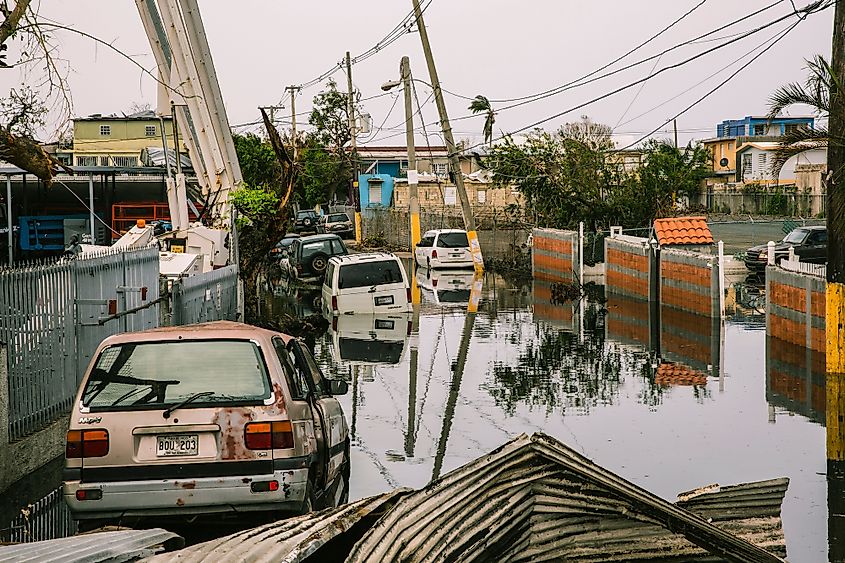
Puerto Rico is exposed to hurricanes, which coincide with the rainiest months. The US National Weather Service classifies the island’s hurricane season as Atlantic hurricane season, occurring between June 1 and November 30 and similar to the North Atlantic Ocean and the Caribbean Sea. About one-quarter of the island’s rainfall results from the tropical cyclone. A cyclone averaging 13.6 tropical storms passes through Puerto Rico every five years, while a hurricane passes every seven years. A Category 5 hurricane, known as the Okeechobee Hurricane, is the only hurricane in the category to make landfall. The hurricane formed on September 6, 1928, and dissipated 15 days later, killing over 2,500 in the US.
Brief History
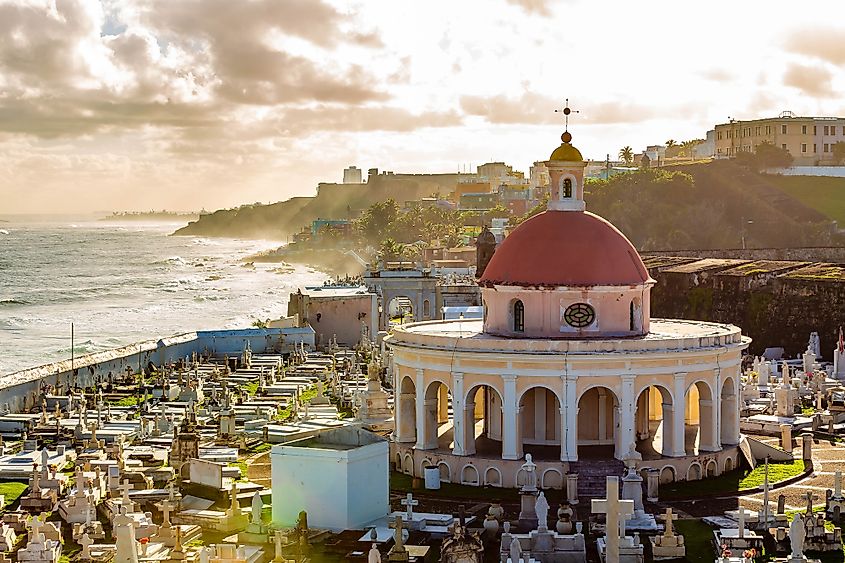
The Ortoiroid people were probably the first people to settle on the island. The Amerindians, who were mainly hunters and fishermen, may have migrated from South America and settled on the island about 4,000 years ago. However, they were displaced from the island by the Saladoid between 430 and 250 BCE. The Ingeri tribe moved to the region around 120 AD from South America. The Taino became the dominant tribe between the 7th and 11th centuries and referred to the island as Boriken
Columbus arrived on the island in November 1493 and named it San Juan Bautista, in memory of John the Baptist. During his follow-up visit, Columbus got express permission from King Ferdinand to take any action necessary to expand the Christian faith and the Spanish Empire. The first Spanish settlement, known as Caparra, was founded in 1508 by Juan Ponce de Leon. However, the Spanish began colonizing the island in the early 16th century. The Spanish colonial period lasted over 400 years and ended with Puerto Rico becoming the US’ administrative region after the Spanish defeat in the Spanish-American War.
Capital Of Puerto Rico
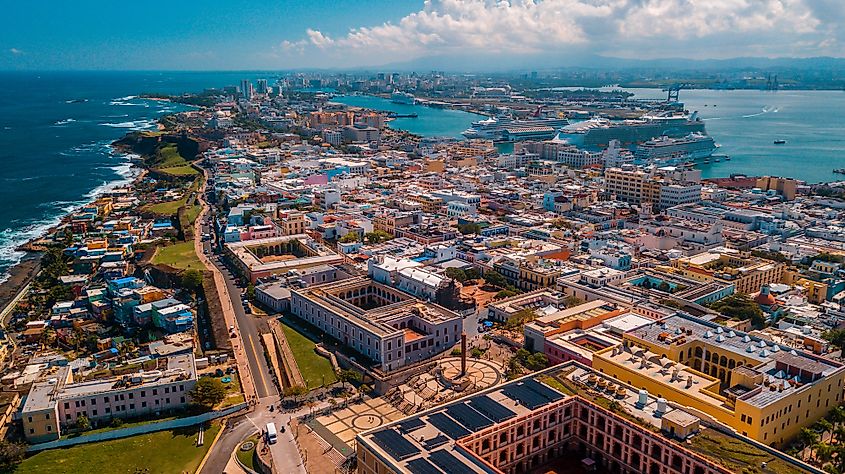
Puerto Rico’s capital and largest municipality is San Juan, established in 1521 by the Spanish colonialists. With a population of about 395,000, it is the US’ 46th largest city. The city is the third-oldest city established by the Europeans, after Santo Domingo and Panama City. It is located along Puerto Rico’s northeastern coast. It is bound to the north by the Atlantic Ocean, east by the municipality of Carolina, west by Guaynabo municipality, and south by Trujillo Alto and Caguas.
San Juan is an important seaport, tourism center, manufacturing, cultural, and financial center. After World War II, the city experiences tremendous economic growth, undergoing an industrial revolution. Its economy is dependent on manufacturing companies, especially medicines, fertilizer, chemical substances, and electrical tools and devices. Tourism is mainly concentrated around Condado Beach and historical destinations, such as Old San Juan and El Morro.
Government Of Puerto Rico
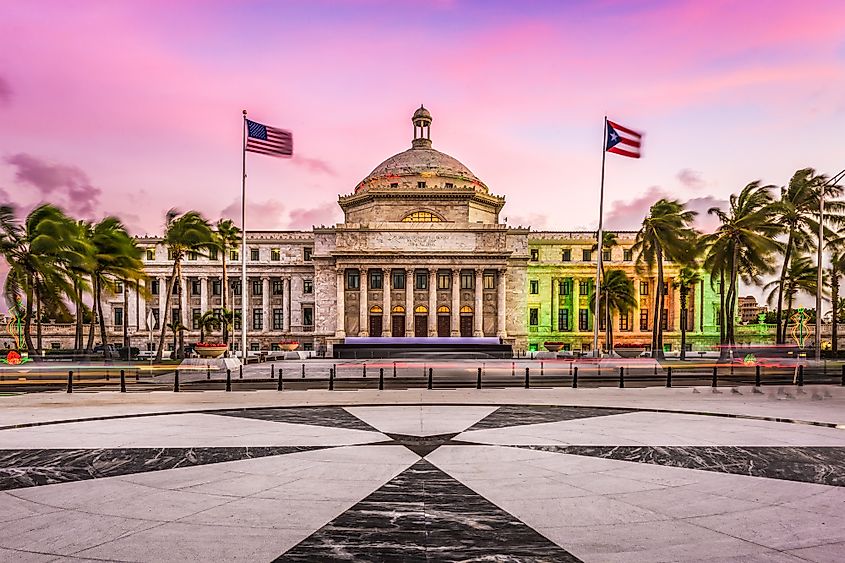
The US heavily influences Puerto Rico’s politics and government. Although the government is characterized by separation of powers, the powers are delegated by the US Congress. The US president is the head of state of Puerto Rico.
The governor is the head of the executive branch. He is also the head of government and commander-in-chief of the island’s National Guards. The legislative arm comprises a bicameral parliament known as the Legislative Assembly. The Senate or the upper chamber comprises 27 members, of which 16 are elected from the 8 senatorial districts. House of Representatives or the lower chambers comprises 51 members, of which 40 members are elected from the 40 representative districts. The judiciary's head is the Chief Justice of the Supreme Court. The legislators and the governors are elected every four years by popular votes. The resident commissioner represents the Island in the US Congress.
The Population Of Puerto Rico
|
Feature |
Fact |
|---|---|
|
Total Population |
3,142,779 (July 2021 est.) |
|
Population Growth Rate |
-1.46% (2021 est.) |
|
Birth Rate |
7.9 births/1,000 population (2021 est.) |
|
Death Rate |
9.53 deaths/1,000 population (2021 est.) |
|
Net Migration Rate |
-13 migrant(s)/1,000 population (2021 est.) |
|
Urbanization |
93.6% of total population (2020) |
|
Life Expectancy At Birth |
total population: 81.47 years |
|
Total Fertility Rate |
1.23 children born/woman (2021 est.) |
|
Literacy (age 15 and over can read and write) |
92.4% |
Source: CIA World Factbook
Puerto Rico is the largest US territory by population, with 3.1 million people as of 2020, decreasing by 15.6% from the 2010 census. The decline attributed to the free movement of people between the island and the US. Its population is shaped by Puerto Rico’s status as an unincorporated territory, European colonization, and Amerindian settlement. The whites account for over three-quarters of Puerto Rico’s population, while blacks account for 12.4%.
|
Rank |
Name |
Population |
|---|---|---|
|
1 |
San Juan |
395,326 |
|
2 |
Bayamón |
208,116 |
|
3 |
Carolina |
176,762 |
|
4 |
Ponce |
166,327 |
|
5 |
Caguas |
142,893 |
|
6 |
Guaynabo |
97,924 |
|
7 |
Arecibo |
96,440 |
|
8 |
Toa Baja |
89,609 |
|
9 |
Mayagüez |
89,080 |
|
10 |
Trujillo Alto |
74,842 |
Table: Most Populated Cities/Towns In Puerto Rico
Puerto Rico is home to over 100,000 immigrants, with the majority from Haiti and the Dominican Republic. San Juan is the largest city, with over 310,000 people. Other populous cities are Carolina, Bayamon, Ponce, Caguas, and Ponce.
Although English and Spanish are the official languages of Puerto Rico, Spanish is the main language. Spanish is spoken by over 95% of the population, while English is a primary language of only 10% of the population. Spanish is also the language of instruction in most schools. Roman Catholic is the dominant religion on the island, with at least one church in all the municipalities.
Culture Of Puerto Rico
Puerto Rico’s culture is a mix of African, American, and European cultures. The European culture is mainly drawn from the Spanish, French, Italian, and German cultures. The island received most of its culture from the Spanish, including the dominant language, religion, tradition, and customs.
|
Ethnic group |
% of total population |
|---|---|
|
White |
75.8% |
|
Black/African American |
12.4% |
|
Other (includes American Indian, Alaskan Native, Native Hawaiian, other Pacific Islander, and others) |
8.5% |
|
Mixed |
3.3% |
Source: CIA World Factbook
|
Religion |
% of total population |
|---|---|
|
Roman Catholic |
85% |
|
Protestant and other |
15% |
Source: CIA World Factbook
Puerto Rico’s culture is mainly centered on music, shaped by the local traditional hymns combined with other foreign cultures, mainly Spanish and African cultures. Spanish and English are the most spoken languages. Besides music, the other cultures influenced the local culinary styles, literature, architecture, and other performing arts. Rooster fighting is an important part of Puerto Rico’s culture. There are 71 official cockfighting venues across the islands, with thousands of people attending the events annually.
Wildlife Of Puerto Rico
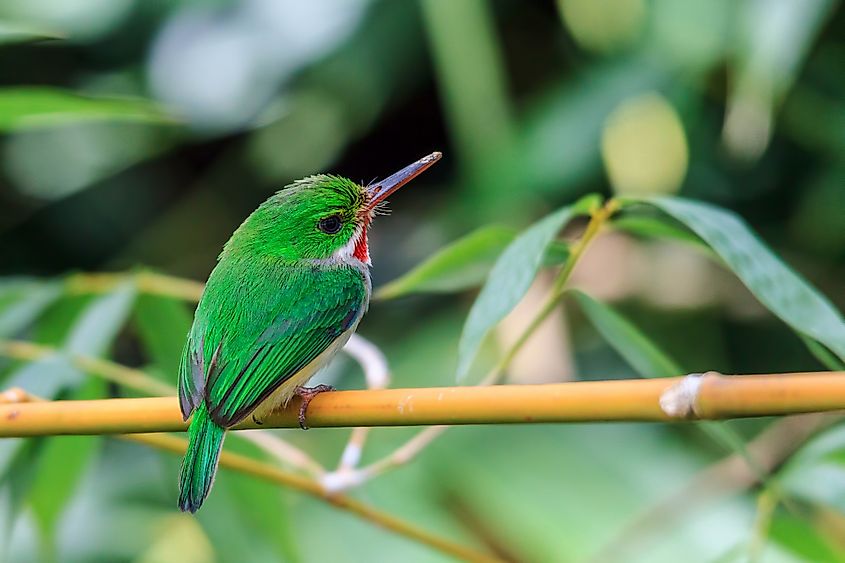
Puerto Rico can be divided into three ecoregions; dry forest, moist forest, and Greater Antilles mangrove. These three ecoregions host diverse fauna, including 39 reptiles, 16 birds, and 239 plants endemic to the archipelago. Puerto Rico’s most popular animal is a frog species known as coqui. The frog species are most common in the El Yunque National Forest.
There are only 13 mammal species in Puerto Rico, including bats, whales, dolphins, manatees, and rodents such as giant hutia and spiny rats. There are 349 bird species, of which 28 are endemic to the island. Some of the bird species are hummingbird, tanagers, and bananaquit. Over 670 fish species live in Puerto Rico’s waters, including 242 ref species, silky shark, and oceanic whitetip shark.
The Economy Of Puerto Rico
|
Feature |
Fact |
|---|---|
|
Real GDP (PPP) |
$110.238 billion (2019 est.) |
|
Real GDP per capita |
$34,518 (2019 est.) |
|
GDP composition by sector of origin |
Agriculture (0.8%), Industry (50.1%), Service (49.1%) |
|
Ease of doing business score |
91.2 (2020) |
|
Labor Force |
1.139 million (December 2014 est.) |
|
Unemployment Rate |
10.8% (2017 est.) |
|
Fiscal Year |
1 July - 30 June |
|
Exports |
$73.17 billion (2017 est.) |
|
Export Commodities |
chemicals, electronics, apparel, canned tuna, rum, beverage concentrates, medical equipment |
|
Imports |
$49.01 billion (2017 est.) |
|
Import Commodities |
chemicals, machinery and equipment, clothing, food, fish, petroleum products |
Source: CIA World Factbook
Puerto Rico has a high-income economy and one of the most competitive economies in Latin America. The island’s Human Development Index of 0.85, ranks it highly among the world’s sovereign nations and territories. Its GDP per capita of $34,518 is the 27th highest in the world. The GDP per capita is highest in the Latin American region. Puerto Rico’s public debt is approximately 103% of its gross national product at about $72,204. However, 41% of Puerto Ricans live below the poverty line.
The archipelago’s economy is dependent on manufacturing, mainly textiles, pharmaceuticals, electronics, and petrochemical. The thriving service sectors include insurance, finance, and tourism. Puerto Rico is a popular tourist destination, especially for MICE (meeting, incentive, conferencing, and Exhibition. But, in 2017, Hurricane Maria disrupted the tourism sector by destroying major infrastructure, including hotels. However, the sector has rebounded, accounting for about 10% of the GDP. Like other US territories, Puerto Rico uses the US dollar as the official currency. However, Puerto Ricans refer to the dollar as “peso” or “dolar.”
Traveling To Puerto Rico
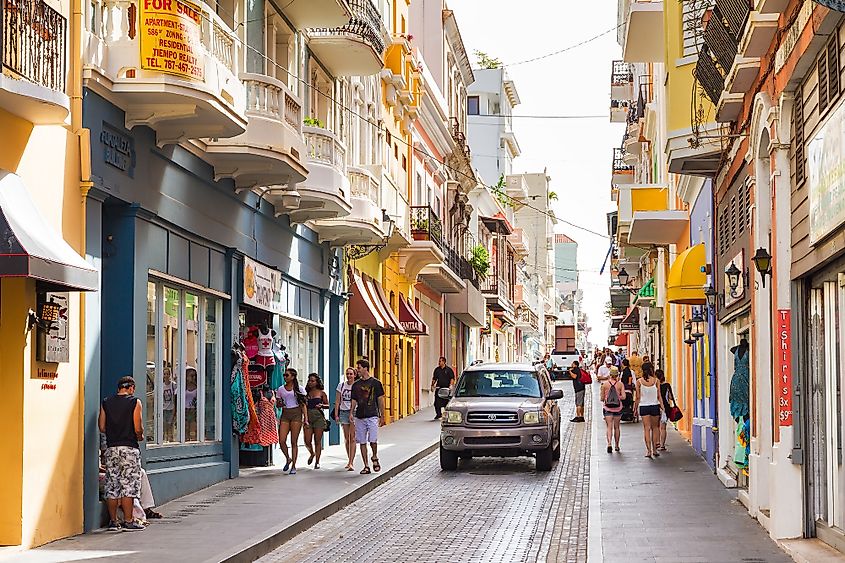
Travelers to the island of Puerto Rico can either fly or use ferry services. Although the island is connected to the Virgin Island and the Dominican Republic by ferry services, the fastest way to travel there is by flight. Aeropuerto Internacional Luis Munoz Marina located in San Juan is the only international gateway to the island. However, none-North American visitors coming to Puerto Rico must fly via the US. Numerous flights connect the island with almost all the US cities. Few flights also connect Puerto Rico with Canada.











